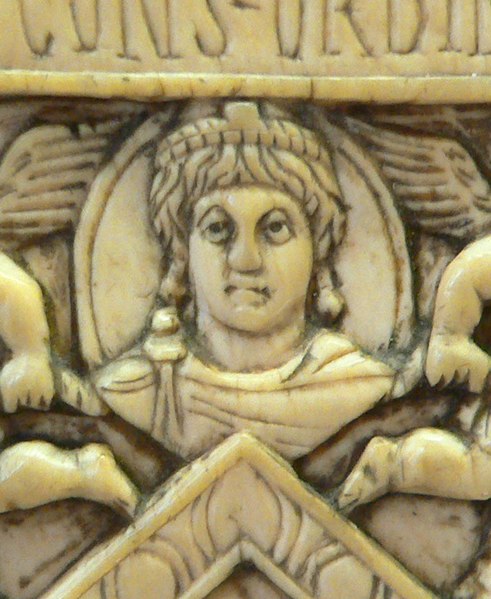Anastasius I Dicorus was Eastern Roman emperor from 491 to 518. A career civil servant, he came to the throne at the age of 61 after being chosen by the wife of his predecessor, Zeno. His reign was characterised by reforms and improvements in the empire's government, finances, economy and bureaucracy. He is noted for leaving the empire with a stable government, reinvigorated monetary economy and a sizeable budget surplus, which allowed the empire to pursue more ambitious policies under his successors, most notably Justinian I. Since many of Anastasius' reforms proved long-lasting, his influence over the empire endured for many centuries.
Anastasius I on a consular diptych, AD 517
The Barberini ivory, a 6th-century ivory diptych representing either Anastasius or Justinian I
Anastasius I (center) alongside his wife Ariadne (right) on the consular diptych of his grandnephew Sabinianus Anastasius (AD 517). The third figure may be the co-consul Agapitus.
A gold solidus of Anastasius I
Zeno was Eastern Roman emperor from 474 to 475 and again from 476 to 491. He was originally from the district of Isauria, which is now part of modern day Turkey, and changed his name to Zeno while serving under Leo I.
A detail of the Missorium of Aspar, depicting the powerful magister militum Aspar and his elder son Ardabur (c. 434). Zeno caused Ardabur's fall, producing treacherous letters that linked him to the Sassanid King; Ardabur later bribed some of Zeno's soldiers into trying to kill him.
Relief of Ariadne, elder daughter of Emperor Leo I and wife of Zeno.
Leo I, father-in-law of Zeno, Eastern Roman Emperor from 457 to 474.
Coin of Basiliscus, who revolted against Zeno in January 475 and held power until Zeno's return in August 476. Basiliscus was Verina's brother; he took power after having Zeno flee from Constantinople, but alienated the people of Constantinople and was captured and put to death by Zeno.








